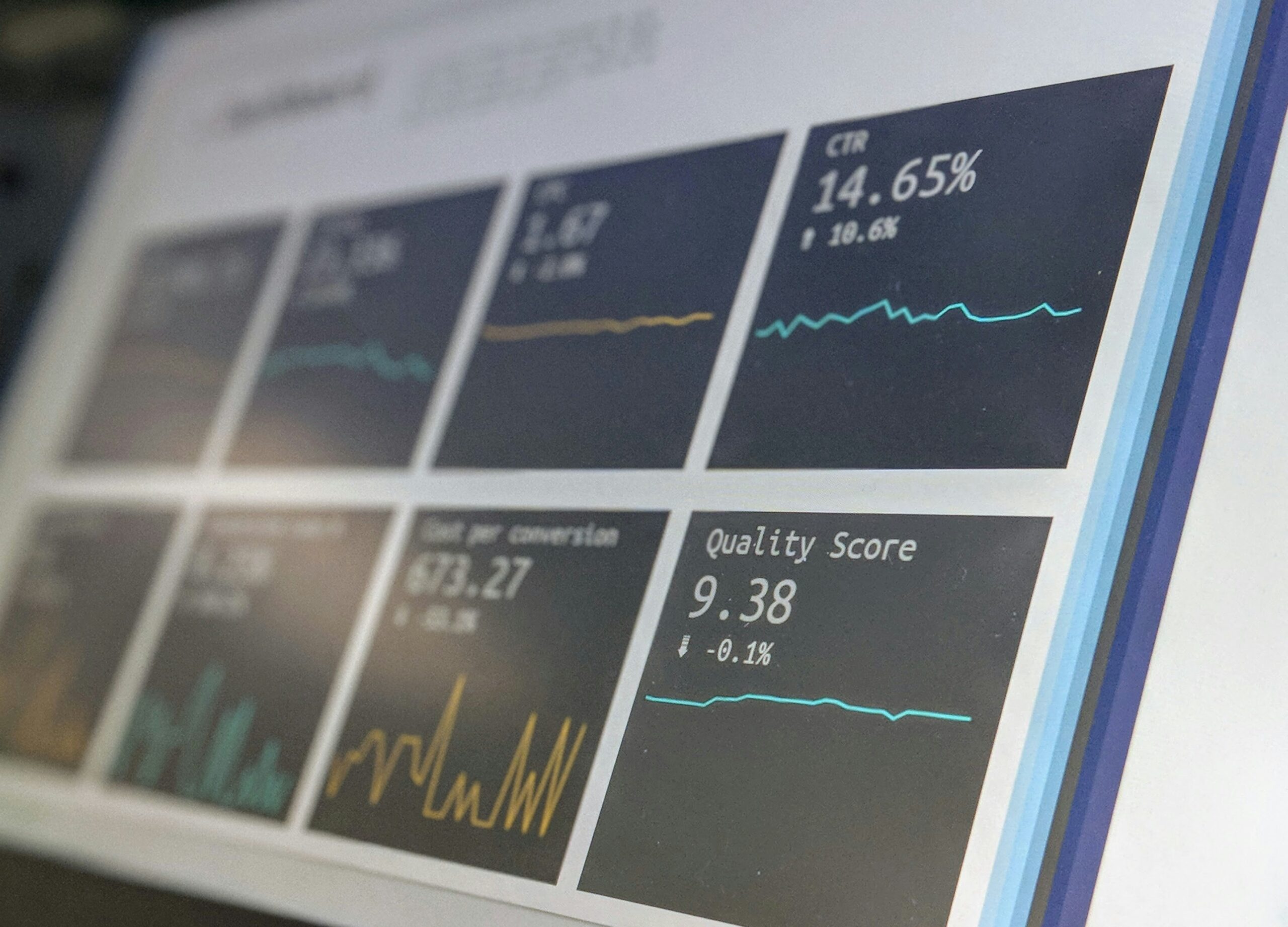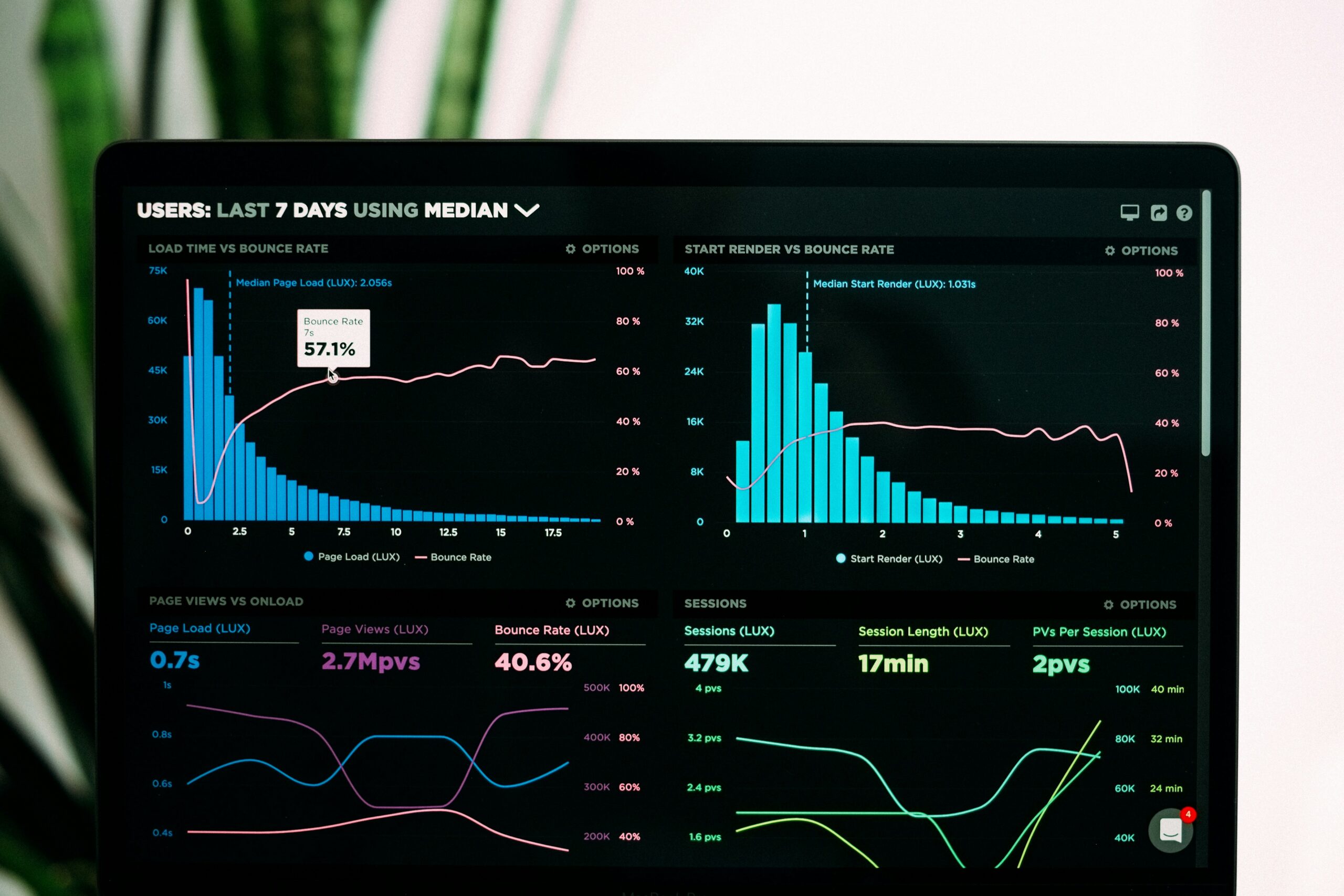Understanding website performance is essential for businesses seeking improved online visibility and lead generation. This article highlights critical website metrics—from visitor engagement to leveraging data-driven insights—that every digital leader must track. By integrating web services, content marketing, and SEO strategies, companies can increase traffic, leads, and revenue.
Key Takeaways
- Engagement metrics reveal how users interact with your content and layout.
- Traffic source data helps identify which channels bring quality visitors.
- User experience indicators guide design and functionality improvements.
- Conversion tracking shows how well your site drives action.
- Content performance metrics inform what topics and formats resonate best.
Visitor Engagement Metrics – Measuring User Interaction and Retention

Visitor engagement metrics reveal how users interact with your website and whether they stay engaged. Metrics like bounce rate, session duration, and page views help determine if users are finding value in your content. A well-structured site with intuitive navigation encourages deeper browsing and reduces early exits.
These metrics highlight which areas need improvement and which are performing well. Understanding user behavior helps create better content and layout decisions. Strong engagement leads to increased time on site, more conversions, and better retention. Monitoring these areas regularly ensures your website keeps users interested and active.
Understanding Bounce Rate and Session Duration
Bounce rate and session duration offer insight into how visitors interact with your site after landing on it. A high bounce rate may indicate content misalignment, poor design, or confusing navigation. Meanwhile, a longer session duration usually means users find your content relevant and engaging. By regularly reviewing these two metrics, you can assess whether your site is meeting user expectations. Simple design improvements or clearer calls-to-action can lead to better retention. These metrics help define what’s working and what needs refinement.
Tracking Pages Per Session and Scroll Behavior
Pages per session reveal how deeply users explore your website, indicating interest in additional content or services. If users navigate multiple pages, it often signals trust and relevance. Scroll behavior tools complement this by showing whether visitors engage with full page content or exit early. By analyzing these patterns, you can optimize layout and prioritize high-value information. Adjusting content hierarchy or simplifying navigation can boost these interactions. These indicators reflect user satisfaction and guide layout decisions effectively.
Evaluating Repeat Visits and Return Frequency
Repeat visits suggest that your site offers value worth revisiting. Whether it’s through new content, offers, or tools, encouraging return traffic is vital for long-term engagement. This metric also ties closely to brand loyalty and content strategy effectiveness. Understanding what draws users back—be it blog updates or helpful features—can inform your retention plan. Improving content relevance and user journey continuity are key. Consistent engagement is a strong sign of digital success and brand credibility.
Traffic Quality and Source Performance Metrics – Evaluating Audience Relevance and Acquisition Channels

Not all traffic delivers the same value, so it’s important to track both quantity and quality. Metrics like traffic sources, referral links, and user behavior by channel help identify which platforms bring in relevant visitors. Analyzing this data allows you to refine your marketing focus and cut out underperforming channels.
Direct, organic, and referral traffic can behave very differently on your site. Evaluating traffic engagement helps prioritize time and resources effectively. Quality traffic is more likely to interact with your site and take meaningful action. These insights guide better acquisition strategies and stronger audience targeting.
Analyzing Referral and Direct Traffic Sources
Understanding where your traffic comes from helps you prioritize high-performing channels. Referral traffic might include backlinks, listings, or mentions, while direct traffic usually reflects existing brand awareness. Both sources offer clues about audience intent and marketing effectiveness. By segmenting this data, you can adjust outreach and partnership strategies. Improving visibility on external platforms may boost qualified leads. These insights guide better resource allocation and targeting decisions.
Assessing Organic Search and Paid Campaign Results
Organic and paid traffic provide distinct benefits, and comparing their performance offers valuable insight. Organic visits often reflect content strength and search engine optimization, while paid campaigns can drive quick, targeted visibility. Monitoring their conversion rates, engagement levels, and cost-effectiveness helps refine your strategy. It’s also helpful to identify which search terms or ads yield the most relevant visitors. This balance of traffic types can guide your long-term visibility plan.
Evaluating Traffic Engagement by Channel
Not all traffic is created equal—some channels bring engaged visitors, while others attract users who leave quickly. Reviewing metrics like average session duration, bounce rate, and goal completions by channel helps highlight what works. This allows you to double down on platforms that support business goals. Channels with low engagement may need message refinement or targeting adjustments. The goal is to attract quality, not just quantity, in your traffic sources.
User Experience Metrics – Assessing Website Usability and Satisfaction

User experience metrics focus on how easily and efficiently visitors can use your site. Load time, mobile responsiveness, and navigation clarity are key elements that impact satisfaction. A smooth, fast, and accessible site encourages longer visits and more interactions.
Reviewing UX data helps uncover pain points that may frustrate users or cause drop-offs. Improvements to site structure, button placement, or mobile layout often lead to better engagement. These changes help create a consistent experience across all devices. Prioritizing user comfort increases the chances of conversions and repeat visits.
Evaluating Navigation and Interface Clarity
A website’s structure and overall usability play a crucial role in shaping user behavior. When visitors can navigate the site easily and locate what they need without friction, they’re more likely to stay, explore, and ultimately convert. However, if the interface is confusing or cluttered, users may quickly abandon the site out of frustration.
Tools like heatmaps, menu click paths, and navigation analytics can reveal which areas are being used effectively and which ones cause hesitation or drop-off. This data helps pinpoint where layout changes, simplified menus, or clearer content hierarchy could enhance the experience. Making thoughtful adjustments—such as decluttering pages, improving labeling, or ensuring consistent design elements—can increase engagement by reducing mental effort.
As users encounter fewer roadblocks, they naturally progress toward desired actions, such as signing up, making a purchase, or contacting your team. Ultimately, a clean, user-friendly interface supports both user satisfaction and business outcomes by aligning form with function.
Identifying Friction Points in the User Journey
Understanding where users drop off during their journey helps uncover hidden friction points that might be affecting engagement or conversions. Tools that track scroll depth, form abandonment, and exit pages offer valuable visibility into where and why users lose interest. These insights can guide improvements, such as simplifying complex forms, enhancing content flow, or making navigation more intuitive.
By addressing these problem areas, you reduce user frustration and create a smoother, more enjoyable experience. A user-focused design not only boosts satisfaction but also encourages deeper interaction and loyalty. Continual review and testing of the user journey ensure your site evolves alongside audience expectations, strengthening overall retention.
Content Efficacy Metrics – Quantifying the Impact of Quality Content on Audience Engagement

Content efficacy metrics reveal how well your content connects with your audience. Time on page, scroll depth, and exit rate can highlight what’s working and what’s not. These insights help guide content strategy, showing which topics or formats perform best. Pages with strong engagement can serve as models for future content. Low-performing pages may need revisions in structure, tone, or clarity. Tracking how users interact with content helps maintain consistency and relevance. Over time, this leads to a stronger content library that better supports business goals.
Tracking Time on Page and Content Completion
Time spent on a page is a key indicator of how relevant and engaging your content is to the audience. When users consistently linger—reading, watching, or scrolling through the material—it suggests that the content is well-targeted, valuable, and effectively holding attention. This dwell time can be further analyzed alongside completion metrics, such as how far down the page users scroll or whether they reach the end of a video or article. These combined signals help identify which pages truly resonate with your audience.
On the flip side, pages with low engagement or short visit durations may signal mismatched expectations, unclear formatting, or a lack of compelling elements like strong headlines, visual aids, or calls to action. By regularly reviewing this data, marketers can make incremental improvements—such as reworking introductions, enhancing visual hierarchy, or adding richer, more actionable insights—that lift performance over time. Understanding these patterns doesn’t just improve single pages but helps refine the overall content strategy to match evolving audience behaviors. Ultimately, this approach turns data into direction, helping ensure every piece of content serves both business goals and user satisfaction.
Analyzing High-Performing vs. Low-Performing Pages
Comparing performance across different content pieces is a strategic way to uncover patterns that can be replicated for greater success. By examining metrics such as time on page, bounce rate, click-throughs, and conversions, you can identify which blog posts, service pages, or landing pages are consistently capturing audience attention or driving desired actions. High-performing pages can offer clues about what type of tone, structure, or topic resonates most with your users, serving as templates for future content.
Meanwhile, low-performing pages aren’t necessarily failures—they may simply need content refreshes, improved meta descriptions, or stronger internal linking to increase visibility and usability. This performance analysis creates a feedback loop where every insight contributes to smarter editorial decisions. Over time, this leads to a content library that better matches audience intent and search behavior. It also allows your team to allocate resources more effectively, putting energy into areas with proven impact. Ultimately, this approach supports a data-informed content strategy that evolves with your audience’s needs and continuously raises the bar for engagement and conversion.
Understanding Content Engagement by Topic or Format
Different formats and topics resonate with different audiences, and understanding this can significantly improve your content strategy. By tracking performance based on content type—whether it’s videos, infographics, short-form posts, or long-form blogs—you can identify which mediums generate the most engagement, shares, and conversions. This insight allows you to double down on formats that perform well while phasing out those that don’t deliver. It also helps streamline your content production efforts toward high-impact outputs.
Additionally, analyzing topical engagement helps you uncover patterns in what themes or subjects your audience finds most valuable or timely. This, in turn, enhances your keyword strategy, ensuring that your content ranks better in search engines. Editorial calendars can also benefit from this data, allowing you to plan posts that match both your audience’s interests and SEO goals. The ultimate result is content that not only draws in more traffic but also sustains user attention and encourages deeper interaction. Over time, this leads to improved retention, higher brand trust, and better ROI from content marketing.
FAQs
What are the most important website metrics to track after launch?
Key metrics include bounce rate, session duration, traffic sources, conversion rate, and page load speed.
How do I know if my traffic is high quality?
High-quality traffic usually comes from sources that lead to longer sessions, more page views, and higher conversions.
Why is user experience important in website analytics?
A smooth and responsive user experience keeps visitors engaged and reduces drop-offs, directly impacting performance.
How can I measure the success of my content?
Track time on page, scroll depth, and exit rates to see how users interact with your content.
What tools can help me track website performance?
Tools like Google Analytics, heatmaps, and custom dashboards provide insights into traffic, engagement, and conversions.
Conclusion
Tracking your website’s performance after launch is essential for ongoing improvement and business growth. By monitoring key engagement, traffic, and usability metrics, you gain insight into what’s working and where to adjust. Understanding how users navigate your site helps you enhance layout, speed, and content clarity. Analyzing traffic sources ensures your marketing efforts attract the right audience.
Conversion-focused metrics reveal how effectively your site turns visits into results. Evaluating content performance keeps your strategy aligned with user interests. These measurements offer clear direction for refining digital efforts. They support smarter decisions that lead to better outcomes. With a consistent review process, you can build a site that grows with your business. Staying data-driven keeps your online presence strong and strategic.
